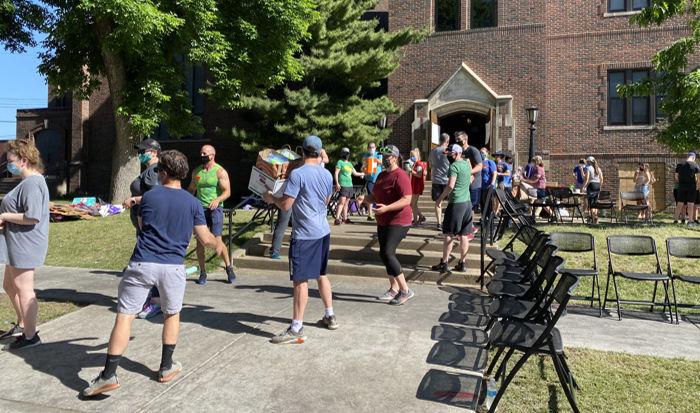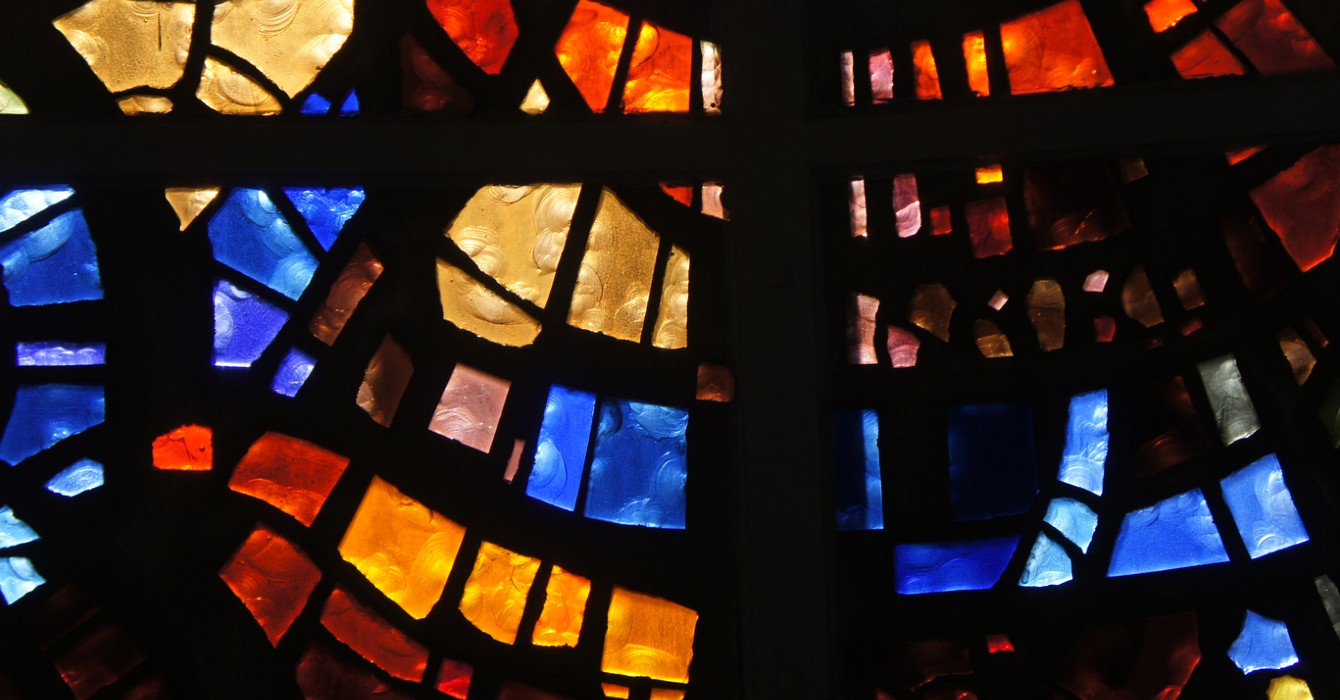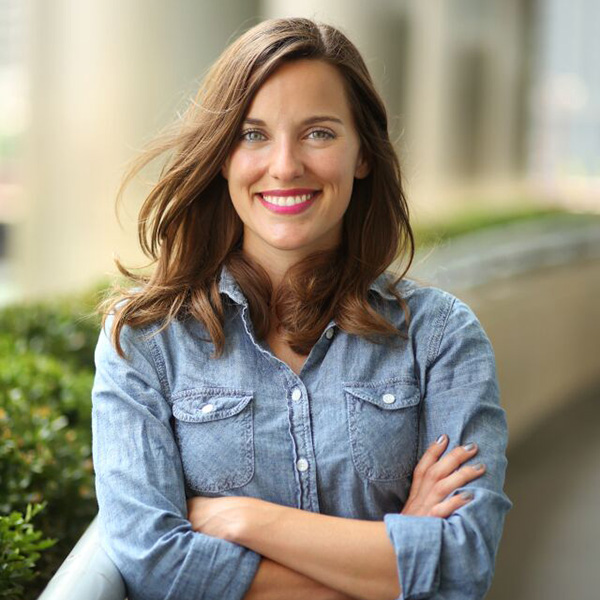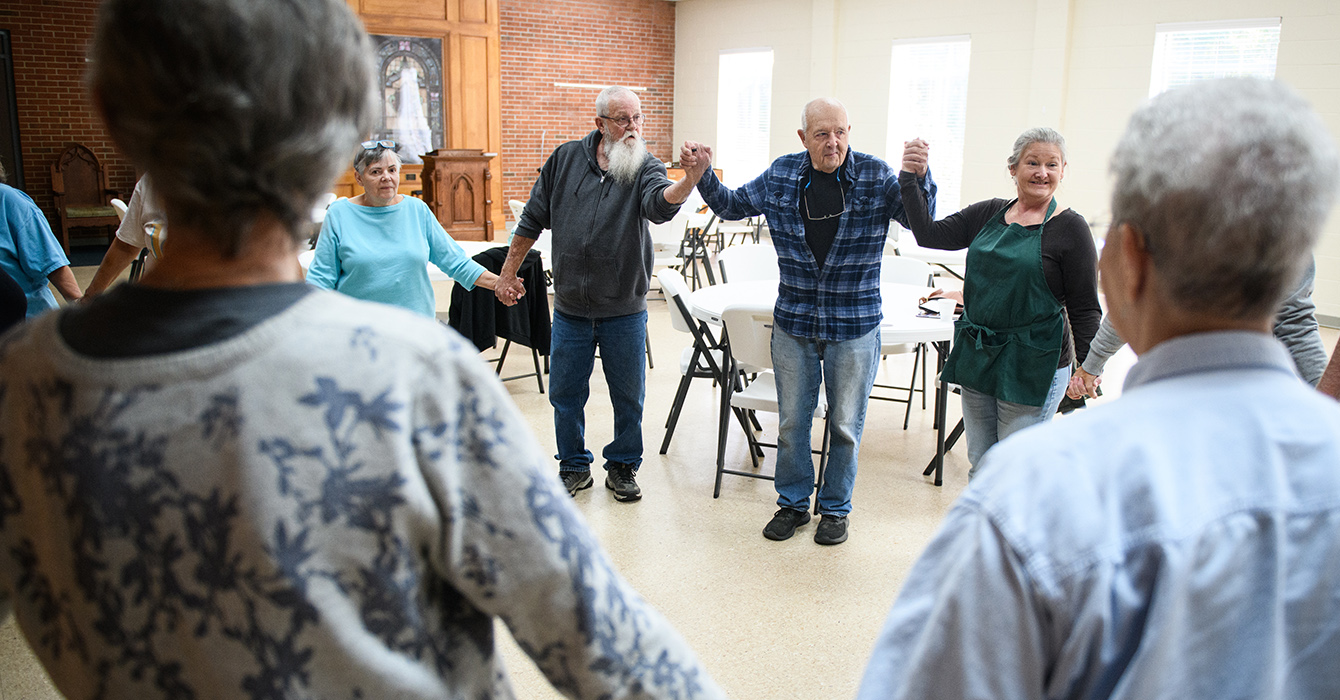When the Minneapolis uprising arrived at their doorstep after the murder of George Floyd, the Revs. Angela Khabeb and Ingrid Rasmussen, pastors of Holy Trinity Lutheran Church, were both surprised.
Khabeb herself had joined the growing crowd and didn’t know that the protest would make its way to her own church.
That night and in the weeks that followed, many needs arose. Holy Trinity was asked to host a medical clinic for injured protestors. Food was suddenly scarce. With each crisis, the pastors didn’t have a lot of time to deliberate -- but they didn’t need to analyze a proper response.
Being the church meant attending to their community’s needs. They set up a clinic, delivered food and kept watch for their neighbors.
During those weeks of the uprising, their church grew and stretched.
“On those nights, the community was permeable,” Rasmussen said. “I hope that we never constrict it again.”
A year has passed since the murder of George Floyd, but the impact of the events of last summer remains, both said.
They have seen their congregation change and their community come together, and that is reason for hope.

Rasmussen is the lead pastor of Holy Trinity Lutheran Church in Minneapolis, and Khabeb is the senior associate pastor. Rasmussen arrived at the community in 2013, and Khabeb in 2018.
They spoke with Faith & Leadership’s Chris Karnadi about the impact of the uprising on their congregation and what healing might look like for their community one year after the murder of George Floyd. The following is an edited transcript.
Faith & Leadership: How close are you to the place where George Floyd was murdered and where the subsequent uprising took place?
Angela Khabeb: My kids’ school is two blocks from 38th and Chicago, where George Floyd was murdered by Minneapolis police. That was an unexpected connection to George Floyd’s murder, that my kids’ school is right there.
It was bizarre to have that multilayered kind of relationship to this global tragedy.
Ingrid Rasmussen: Our church is about a mile and a half from from 38th and Chicago.
But we’re just a block or two away from the police precinct building where the issuing officers were sent out from, so that’s why our area and 38th and Chicago are so intimately connected, and why the uprising found its way from 38th and Chicago over to our area.
Most of the uprising activity was very close to our building.
F&L: How was your congregation involved or affected?
AK: Well, when the George Floyd uprising happened, we were in a pandemic. So that complicated absolutely everything.
We had members of our congregation who wanted to be physically present but, because of health concerns, thought it best not to be. I remember that when there was the initial protest, I thought no one would come out, because of the pandemic. But I watched the video, and I was just bawling.
I went upstairs and I told my husband, “That man called out for his mom. As a mom, I have to go.”
So I went, thinking maybe 100 people would show up. But I couldn’t park my car, there were so many people crowding the streets. I tried to be socially distanced, but there were too many people. And I had no idea that the protest was going to end at our church.
In our congregation, we believe in being public about our faith. We don’t have to convince people that Black lives matter and that you should come out and support. Our congregation was ready and willing to be heard and to be vocal and to be present with their own bodies, resources, finances -- everything that they had, to be present.
IR: Right. People showed up in the ways that they could, based on their age and preexisting conditions and all these things that in another time wouldn’t have even affected us.
It really was kind of this anomaly within our own history that we had to think so differently about who could do what.
F&L: Do you remember what you were thinking during those weeks?
AK: I can remember thinking that this is history unfolding, and I’m in the middle of it.
One day, my children’s children are going to ask me where I was and what I was doing. And I wanted to, 30 years from now, be able to look them in the eye and say, “I responded faithfully, even when I was afraid.”
That was my lens. I wanted to try to lift myself up above where I was in the chaos and the pain and visualize myself, a couple of decades in the future, able to look back and say, “I did what I thought was a faithful response of speaking truth to power, even when it was dangerous.”
IR: That’s powerful. I think, for me, one side of the experience was so hyperlocal. Angela and I, along with so many others, were in the building just attending to really particular needs at any given time of the day or night. Solving problems for people and neighbors.
And then, like Angela, there was also this sense, for me, that what was unfolding in our church building and around the church building was gaining the attention of, certainly, the city but also the state, the country and the world.
And so I remember this feeling, like, I was getting text messages from people around the country, even around the world, messages through social media, saying, “It looks like you’re in the middle of a war zone. Are you OK?”
And it was true; I think we should start calling it a war zone, because I think that that’s an accurate description of the level of police violence that was being exerted on the community.
On the one hand, it was so chaotic and tumultuous, and on the other hand, the community was completely on the same page, acting together. It’s hard for me to make sense of that in my brain, that it was both at the same time.
Events felt totally outside anyone’s control, and yet also felt there was a clear voice of the righteous anger of the community that said, “No more. We’re going to act together to say, ‘No more.’”
AK: I felt like, finally, this was almost like our church’s Sweet 16 birthday party.
This is your coming out. This is what the church is supposed to do. We’re supposed to throw our doors open and say, “Come here. We are a place of refuge when terror presses in, when oppression is pressing.”
That’s what the church is here for. That is the body of Christ. That is Jesus.
IR: Totally. I think when I listen to you describe how the church was acting, doing what it said it was going to do, that brings up an image for me about those days and nights, about how “membership” shifted.
Who was a member and who wasn’t a member of our congregation didn’t matter in those moments. The only reason we cared about who was a member was because [the members] knew where the water sources were and could find the vacuum and extension cords.
Our church and so many others have these really static understandings of what Christian community is. But on those nights, the community was permeable.
By the time I got to the church on the first night of the uprising in our neighborhood, there were people I didn’t know stationed where we typically have ushers outside the front doors, serving as the welcome team.
Our understanding of the way that the church interacts, how we define church, was really stretched, and I hope that we never constrict it again.
F&L: How do you think your congregation has been permanently affected by the past year?
IR: One of the things that I have been thinking about is how white supremacy plays out in the congregation and in my own life.
One of the ways that I see it unfold is that I want to know the ending before the beginning of anything. I want to play out all the different scenarios before I engage in something new.
During the uprising, we got a call saying, “We need a medic station for the neighborhood, like, five minutes ago. Can Holy Trinity serve in that role?”
And our congregation got a glimpse of what it looks like to just say yes, to not play out everything that could possibly go wrong -- because a lot could have gone wrong. But our neighbors were standing right there, and they needed help. Can we as a community just say yes? Can we not take it to the next committee meeting? Can we not take it to the church council? Can we not do a 14-month book study?
All of those things are good. They’re not in and of themselves bad things. Study, discernment and conversations that lead to group consensus can be good things, but when they stand in the way of us saying yes to our neighbors in a moment of need, then they are not good things.
Our congregation got a glimpse of a different way and a different speed of responding that is more faithful. That’s one thing.
AK: After the initial uprising, our neighborhood became a food desert overnight, and we created this food distribution that was phenomenal throughout the summer.
I saw a movement in our congregation from a theology of scarcity to a theology of abundance. And I think that that has made a lasting impression. There is enough -- and there’s always been enough -- for everyone.

F&L: How has your own understanding of your vocation been affected by this year?
AK: Well, for me, some of my colleagues, especially my Black female colleagues, would say, “Angela, now, woke white people are a different breed, and you really need to be very, very careful.”
And I said, “Oh please. I’ve been in rural Ohio, where they threatened to literally kill me. So I got this. I’ll be just fine.”
“No, no, no,” they said. “You don’t know white supremacy until you know woke white supremacy.”
It’s been a real challenge for my vocation to serve in the whitest denomination in the United States.
And so I’ve been thinking of things that we can’t live without, and hope is one of them.
“Hope is like the air we breathe,” a colleague said to me. And I was like, “Yeah, hope is like oxygen! It’s all around us, but we just can’t see it sometimes. That’s great!”
And then I thought, “Oh, but people can squeeze oxygen out of your body until you die. People can squeeze hope right out of your body, slowly, slowly, until you die.”
And I thought, “Oh, maybe that’s what’s happening. George Floyd was laying there with officers on his back, slowly squeezing the oxygen out of him. And you know? There is also poverty, sexism and racism that are also kneeling on my back.”
And where is the church in all of that? Well, often the church is complicit.
F&L: Have you seen any healing over the past year? What does healing look like for your communities?
AK: Even with healing, the scars will always be present. Even when Jesus was resurrected, the scars remained.
Generational trauma is passed down. I wasn’t alive when Emmett Till lived and died. In fact, Emmett Till is probably the same age as my dad, if he had lived. I was not alive, but I feel that pain of Emmett Till.
Emmett Till’s family knew no justice, but that justice for George Perry Floyd is somehow tied up in all the other injustices that we didn’t get to see. It is, but it’s not. It’s complicated.
Healing is the fact that we can still move and people are still functioning. We’re just a scarred community that is doing the best that we can, kind of like that body of Christ.
IR: The people in our neighborhood rebuild group often say that there’s no blueprint for what it is that we’re doing right now. “There’s no historicity of justice,” they say.
We can’t look back and see how they did it before, because the truth is we haven’t seen racial justice with our own eyes.
So when I think about a healing, I remind myself that it’s not a return to what was. What is healing? Talk about questions and no answer!
What does it look like when we see a man being murdered in broad daylight by people that the community tells us are sent out to protect? If that’s our starting point for this past year, then what does healing look like in the wake of that?
I guess I have to ground it in really particular actions. It looks like the community taking to the streets. It looks like people banding together to share their experiences of grief. It looks like food being given to the people who are lacking access. It looks like our public officials taking seriously their responsibility to reform a system that has advantaged some to the detriment and death of others.
It looks like the church taking seriously its complicity that Angela talked about, and naming it, and then attending to it.
And all of that without knowing exactly how to do it. We’re just figuring that out day by day -- I feel like hour by hour.
Healing is a call to create something new that none of us have seen. And that’s a big call.











